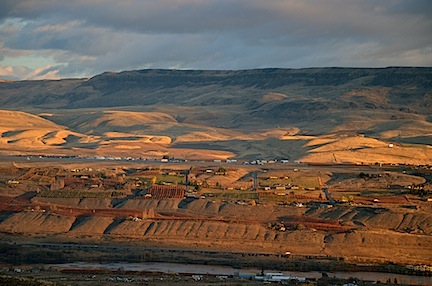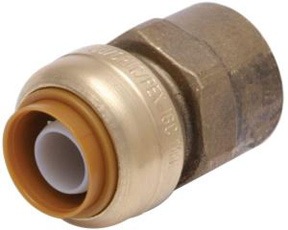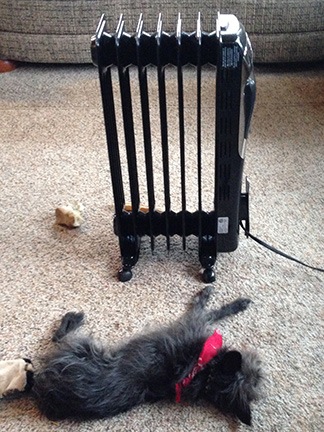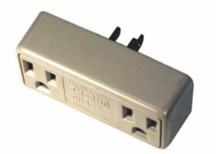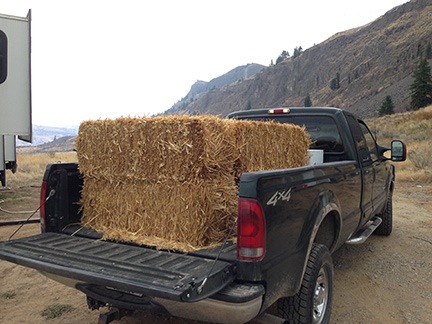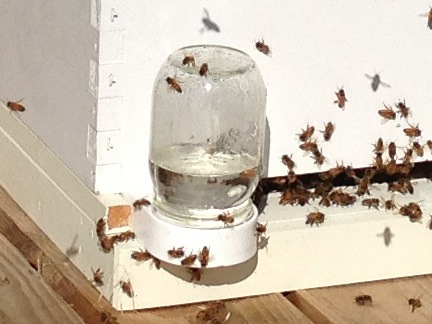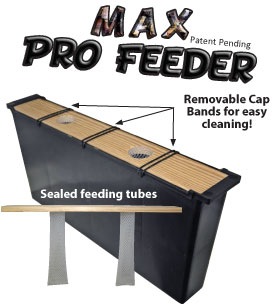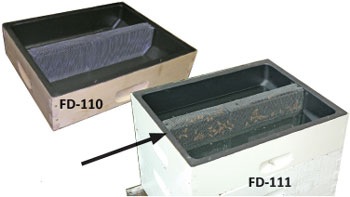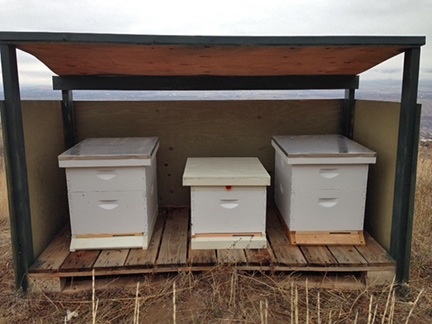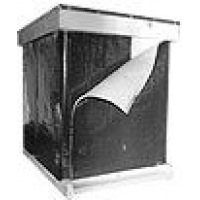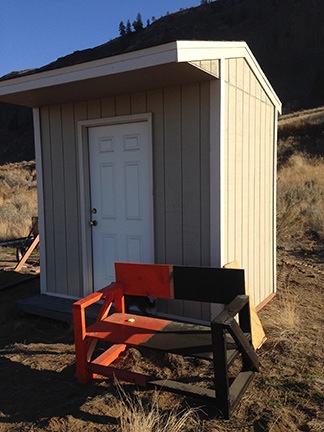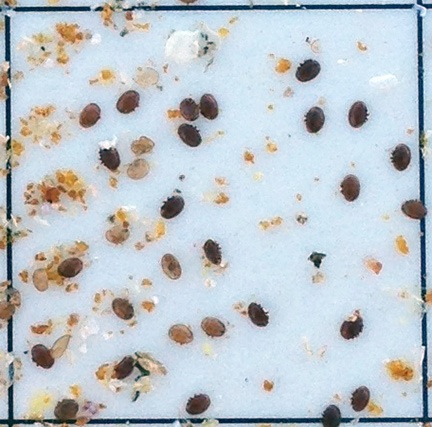Tracking house-sitting time with cups of coffee.
As I blogged a while back, I had every intention of spending the winter in my RV on my property in Malaga. The winterization worked well and I had no trouble with water, electric, or sewer hookups. I had enough heat to keep me warm night and day. And I had all the conveniences of home — the same home I’d been living in full-time since May and every summer since 2010.
The big drawback was the cramped space. Let’s face it, the mobile mansion might be big for a 5th wheel RV, but it’s not big for a full-time living space. And with winter weather outside — often at freezing temperatures — there was no outdoor living space to complement it.
Still, I’m not home very much — I have a pretty active work and social life — and I was prepared to deal with it. After all, the winter wasn’t that long.
I went to Seattle on a Sunday in mid-December. I had some chores to take care of — new battery for my phone, shopping for cross-country skis, hiking with a meetup group — and I’d already decided that I’d make at least one trip into Seattle every month, just to insert a dose of city amenities. When I got home that evening, there was a note on my door. It was from a man I’d never met — we’ll call him Joe to preserve his privacy — who happened to be friends with one of my neighbors. “Don says you’re going to freeze,” the note said, referring to my neighbor. It then ended with an invitation to spend the winter in his house since he was going away to (ironically) Arizona. He’d be gone until February month-end.
I thought about if for three days before calling him. Then I said that I appreciated the offer but thought I’d be okay. Still, maybe we could meet in case I needed a Plan B?
Before meeting, I talked to two people I thought might know him. They both had nice things to say about him. He’d lost his wife in March and was working his way though that. They both told me that he lived in a nice house.
In the meantime, the weather forecast changed. It had been in the 40s every day and I’d been able to get work done outside on the path I was building and in my shed. For some reason, I thought it would stay like that. But no — it was going to get colder and those midday jaunts outside would soon end — at least until the snow came and I could take the skis or snowshoes out with friends.
I met Joe and told him I’d reconsidered. If the offer was still open then yes, I’d love to take advantage of it. He showed me around his wonderful three-bedroom home just two and a half miles from my place. Situated on a shelf — just like my lot two levels up the mountain — it had a wrap-around porch and nearly the same view I had of the Wenatchee Valley. Furnished with antiques, it had a few modern conveniences I missed: a dishwasher, washer, dryer, and satellite television. There was plenty of room and plenty of privacy. There was even a garage and space in a covered carport to park my Jeep and truck.
It was more than I could possibly ask for. And all he wanted in return for letting me use the place was for me to pay the utility bills while I was there, keep the place clean, and keep an eye on things.
Joe, in the meantime, was heading south with his trailer and a friend. They planned to leave on December 2. I was welcome to move in any time, but I honestly felt a little weird moving in before he left. That would make me (and Penny) a house guest instead of a house sitter. So I held off, prepping for the move back in the mobile mansion.
At November month-end, the forecast warned about bad weather on December 1 and 2. Joe’s friend, who was coming down from Canada, came early. They packed up and pulled out on November 30.
I was supposed to do shuttle flights between two wineries — Martin Scott in East Wenatchee and Malaga Springs in Malaga — on November 30, which was a Saturday. But low visibility and some freezing fog made that a dumb idea. With my afternoon suddenly open, I decided to start my move that day.
I made a few trips in my truck, bringing along the bare necessities like clothes and food from my fridge and cabinets. I wasn’t sure what I’d need and, at first, I also brought along linens and towels and my electric blanket. I wound up bringing all these things back to my RV. I wanted to keep things simple so it would be easy to move out at the end of my stay.
I went out that evening with some friends and returned to my new (temporary) home around nine. I’d already picked one of the guest rooms. I put Penny’s bed on my bed, atop the comforter I’d brought along, and and climbed between the covers. I turned off the light and lay on my side, facing out one of the room’s two big windows, looking out at the lights of Malaga, Wenatchee, and East Wenatchee. My new home would have windows just as big. I felt as if I were getting a preview of what was to come.
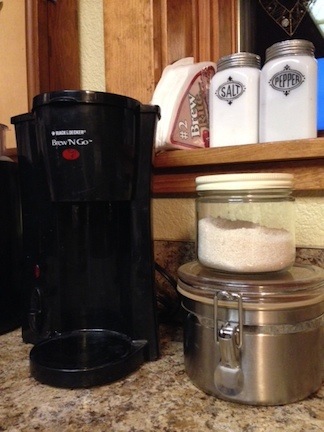
Coffee, coffee brewer, filters. What else do I need?
The next morning, I made coffee, just as I did every morning wherever I lived. I’d brought along my little one cup coffee brewer and a brand new pack of #2 cone coffee filters. I opened the pack of filters and brewed some coffee. I let Penny out and she did her business somewhere out in the yard, which she’d already explored the previous day. When she came back in, I fed her — I’d also brought along her placemat, dishes, and food. It was life as usual for the two of us — just in a different place.
But we’re used to that. For the past 18 months, we’ve been sort of gypsies. We lived in at least 20 different places, including various homes and hotel rooms. Even the RV had been parked in six different places in three different states. Penny and I adapted as necessary, settling into each of our temporary homes with ease. I loved the variety our gypsy lifestyle offered us and Penny didn’t seem to mind one bit. I think she’s come to expect it.
I spent much of Sunday morning prepping the RV for winter vacancy. That meant blowing out the water lines, putting antifreeze down the drains, and disconnecting the power for the heat tape on the water line. And packing up and moving a few more things. The weather was still iffy, with low clouds and mist. I had a gig flying Santa into Pybus Public Market later in the day and, for a while, wasn’t sure if I’d be able to do it. But by 12:30, I decided to give it a try and headed out to take care of it, leaving Penny behind for the first time, alone in Joe’s house.
After the flight, I met up with some friends at a wine tasting room and we wound up going to dinner. I didn’t get home until after 9. Penny was excited to see me. I checked the house out thoroughly to make sure she hadn’t had any “accidents” while I was gone. All was okay.
By Monday morning, life had already settled into a routine. I let Penny out, made coffee, let Penny in, and fed her. I caught up with email and Facebook while having breakfast at the kitchen table, watching the valley light up as the sun rose. (The view really is magnificent.) I showered and dressed. I already felt at home.
I ran out to do some errands that included dropping off my Jeep for service. It had been leaking from the transfer case for about a year and I needed to get it fixed. After all, it would eventually run out of whatever was leaking. But what really prompted me to get it taken care of was that I wanted to park it in Joe’s garage and I didn’t want it leaking in there.
I’d arranged for a neighbor to pick me up on her way home from errands in town and I had time to kill. After dropping off the Jeep, I had another breakfast in town — Sassy’s Dinner makes the best breakfast! — and then walked to Caffé Mela for a latte and to update the software on my iPad. On the way, I noticed that there was fresh snow on the hills north of town. Then I wandered to a used furniture store to browse for a dining table and chairs — the only thing I needed to furnish my new home when it will be built next year. My neighbor and her son picked me up and we drove up to where the mobile mansion and my truck were parked. I was surprised to see fresh snow on the ground — it had snowed during the three hours I was gone.
I decided that I didn’t trust my RV winterization. So I set up a heater in the basement and inside the RV. Power was cheap enough that the two heaters would be cost-effective insurance. I also had the added benefit of having the place kept warmer than freezing if I had to come back and fetch anything I’d left behind. I still had one more trip to make — to get my computer, printer, and camera gear — and then I’d close up the slides. That would make a smaller place for the inside heater to keep warm and minimize the amount of roof space exposed to the snow.
I should mention here that my hangar is large enough for me to park the RV in it, too. But it’s a pain in the ass to move and I did an excellent job parking it right where it is. I’ll admit it — I’m too lazy to move it and then move it back in February. (There’s also the very real possibility that snow on the ground would make it impossible to move in February.) And because of that, the mobile mansion will spend its very first winter outdoors.
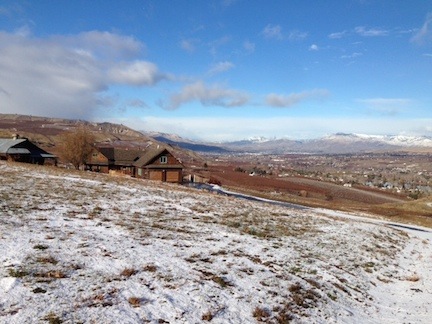
Joe’s place is truly wonderful.
When I got back to Joe’s place, I stopped at the end of the driveway to snap a photo with the dusting of snow all around and the valley off in the distance. It really is a beautiful place and I know I’m very fortunate to be here.
More errands yesterday afternoon, including a quick visit to where my helicopter is parked inside Pybus Market. Then home to Penny and dinner. I set up my Christmas tree for the first time in three years. We even watched a DVD.
This morning, I got right into my routine.
As I pulled a coffee filter out of the package, I consulted the label to see how many were in there. 100 coffee filters. I thought about my stay at Joe’s house. Three months. Pretty darn close to 100 days. I realized that I could see at a glance how much time was left of my stay just by looking at that package of coffee filters.
It’s still very full.

